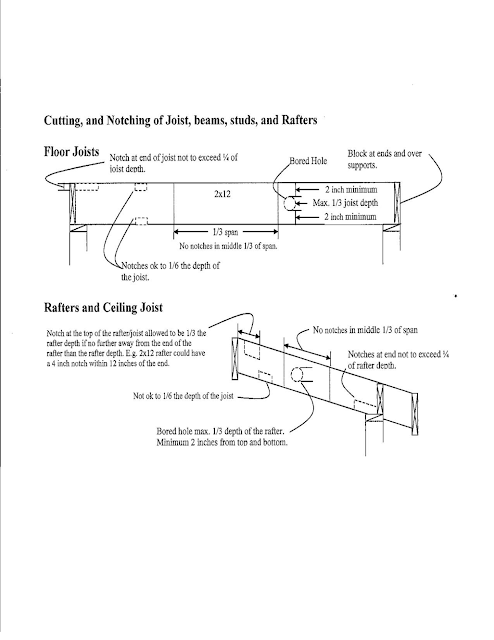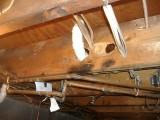Inspecting Notches and Holes in Joists


The most abused structural member is the joist! There is rarely a week that goes by where I do not see a joist that has been compromised. Sometimes it is HVAC duct, or maybe a plumbing pipe. Home inspectors are not conducting an engineering inspection, however there are some guidelines we should use in the field to ensure our clients potential house will remain structurally sound. No notches should be in the center third of a joist span. A notch can be cut in the ends, however they can’t be deeper than 1/6th the actual depth of the joist or any wider than 1/3 its depth. For instance; if you had a 2 X 8 floor joist, which actually measures 7 1/2” high, the notch can’t be any deeper than 1 ¼” or any wider than 2 ½” Notches at the ends of the joist shall not exceed ¼” the depth of the member. The length of the notch should not exceed 1/3 the joist depth The tension side (bottom) of members 4” or greater shall not be notched except at the ends of the rafters. Drilled holes can’t be any closer than 2” from the edges of the joist or to any other hole or notch in the member. The maximum diameter of the hole can not be larger than 1/3 the joists actual depth. Using the 2 X 8 example; that would be a 2 ½” hole. For ceiling joists and rafters, the requirements are a little different. Like a floor joist, nothing can be drilled or notched in the center third of the span. A notch in the top of the rafter / ceiling joist is allowed, however it can be no larger than 1/3 the rafter / ceiling joist depth. For example a 2 X 12 rafter could have a 4” notch within 12” from the end. A bored hole can be no larger than 1/3 the depth of the rafter and a minimum of 2” from the top or bottom edge. Structural members should never be ripped. Doing this will change the structural strength.
Holes or notches in manufactured lumber must be in compliance with the manufactures direction or by a qualified design professional.
Related Articles:
- Inspecting Floor Trusses
- Inspecting Manufactured I Joists
- Cantilevered Areas
- Bridging, Blocking, & Bolting: Inspecting Floor Structure Components
Want To Learn More? Click HERE to Search Our Full Database Of Home Inspector Newsletters.



